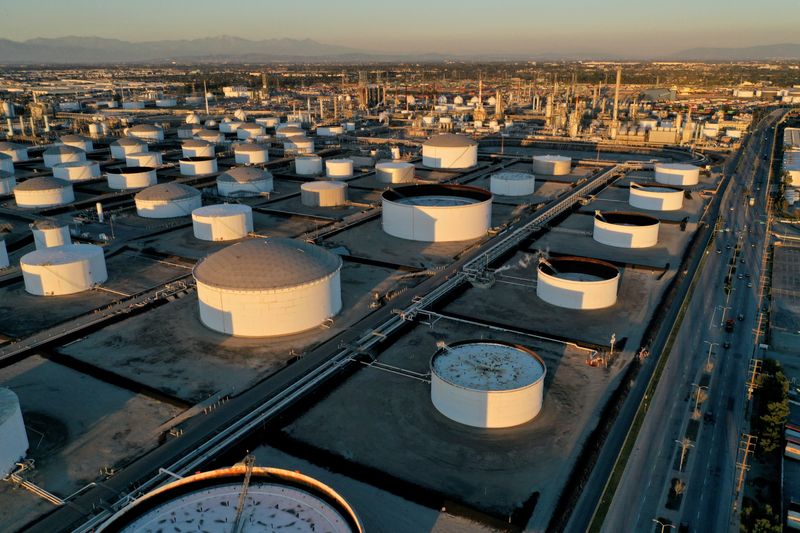Commodities
Oil prices stable as demand uncertainty persists

By Paul Carsten
LONDON (Reuters) – Oil prices were stable on Tuesday, as traders awaited signs of a hoped-for summer demand boost to prop up prices even as strong supply threatens to blunt gains.
Benchmark futures were down 2 cents to $84.23 per barrel at 1231 GMT after climbing in the previous session. U.S. West Texas Intermediate crude futures, which also rose on Monday, were up 3 cents to $80.36 a barrel.
Both benchmarks gained around 2% on Monday, closing at their highest levels since April. Brent has clambered back from an early-June close of $77.52, though remains off its $90 peaks in mid-April.
“The oil market shifted its focus back to fundamentals, which have been soft for some time,” said BoFA commodity and derivatives strategist Francisco Blanch in a note, adding that global crude oil inventories and refined product storage in the United States and Singapore, among other places, was higher.
Meanwhile, global oil demand growth slowed to 890,000 barrels per day year on year in the first quarter, and data suggests consumption growth likely slowed further in the second quarter, he said in the note.
But inventories are expected to have fallen by 2.3 million barrels in the week to June 14, according to analysts polled by Reuters.
“The critical data set this week, at least for us, will be the U.S. oil inventory data as it could confirm or refute the developing optimism that demand has started its ascent at the dawn of the summer driving season,” Tamas Varga of oil broker PVM wrote in a note.
Some analysts remained bullish on the price impact of an extension by the OPEC+ group of supply cuts in the near term.
“The latest guidance provided by OPEC+, as well as their unchanged 2.25 million barrels per day demand growth outlook, signals a stagnation in oil supply growth for 2024 and an apparent downside risk to production in 2025,” said Patricio Valdivieso, Rystad Energy vice president and global lead of crude trading analysis.
“Under these conditions — and the disconnect between the OPEC+ demand outlook and all other agencies — it is hard to remain fully bearish when global oil supply growth appears decimated,” he added.

In China, oil refinery output in May slipped 1.8% from year-ago levels, statistics bureau data showed on Monday, as refiners undertook planned maintenance and processing margins were pressured by rising crude costs.
Investors were also looking out for further clues on interest rates, and how U.S. demand will develop, as several U.S. Federal Reserve representatives are scheduled to speak later on Tuesday.
Commodities
Oil prices rise; U.S. crude inventories plunge, Russia-Ukraine truce eyed
Commodities
India’s Reliance to stop buying Venezuelan oil over US tariffs, sources say
Commodities
Oil prices climb on Venezuela supply worries

 Forex3 years ago
Forex3 years agoForex Today: the dollar is gaining strength amid gloomy sentiment at the start of the Fed’s week

 Forex3 years ago
Forex3 years agoUnbiased review of Pocket Option broker

 Forex3 years ago
Forex3 years agoDollar to pound sterling exchange rate today: Pound plummeted to its lowest since 1985

 Forex3 years ago
Forex3 years agoHow is the Australian dollar doing today?

 Cryptocurrency3 years ago
Cryptocurrency3 years agoWhat happened in the crypto market – current events today

 World3 years ago
World3 years agoWhy are modern video games an art form?

 Commodities3 years ago
Commodities3 years agoCopper continues to fall in price on expectations of lower demand in China

 Economy3 years ago
Economy3 years agoCrude oil tankers double in price due to EU anti-Russian sanctions























